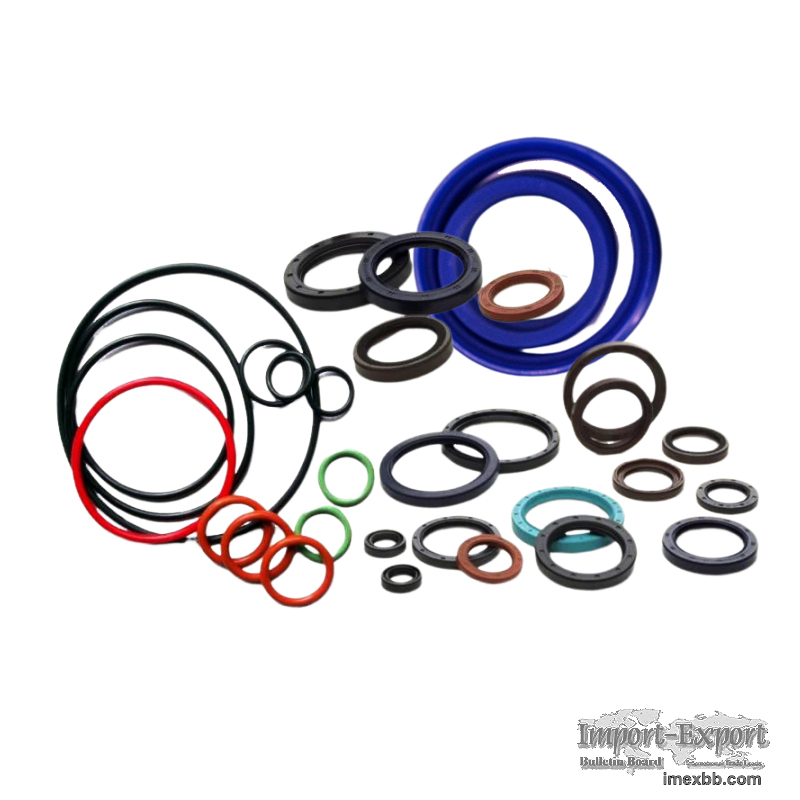 |
 |
Home > Offers to Sell > Others & Excess Inventory > Others
| Contact: | junyingliu |
|---|---|
| Company: | Xingtai Shanfeng special rubber products Co., Ltd |
| Hetou Industrial Zone, Renze District, Xingtai City, Hebei Province | |
| Xingtai City, Hebei | |
| China | |
| Phone: | 18713908608 |
| E-Mail: | |
| Date/Time: | 10/18/23 7:21 GMT |
China NQKSF Oil Seal Manufactory Supply High Pressure Hydraulics Seals
Hydraulic systems are integral to many industries, including construction,
manufacturing, and aerospace, among others. These systems rely on the power of
pressurized fluid to perform tasks such as lifting, pushing, bending, and
cutting. A key component of these systems is the hydraulic seal.
Hydraulic seals are relatively soft, non-metallic rings that are used to
prevent fluid from seeping around components within a hydraulic cylinder. They
are typically made from materials such as polyurethane, rubber, or PTFE. The
choice of material depends on various factors such as the type of hydraulic
fluid used, the operating temperature of the system, and the level of pressure
it handles.
There are two main categories of hydraulic seals: static and dynamic.
Static seals are used between mating parts that do not move relative to each
other. They are compressed between two rigidly connected parts to create leak-
proof joints. Dynamic seals, on the other hand, are used between mating parts
that move relative to each other. These seals prevent leakage around a moving
component and are subjected to wear as one of the mating parts rubs against the
seal.
Some common types of hydraulic seals include piston seals, rod seals, and
wiper seals. Piston seals prevent fluid from crossing the piston area,
maintaining pressure within the system. Rod seals prevent fluid leakage from
the cylinder and ensure adequate pressure is maintained. Wiper seals are
installed to prevent contamination from entering the hydraulic system.
The importance of hydraulic seals in a system cannot be overstated. They
prevent leakage of hydraulic fluids, reducing downtime and costs associated
with system failure. They also reduce friction and resistance between moving
parts of the hydraulic system, enhancing efficiency and performance.
Furthermore, they improve safety by preventing hydraulic fluid leakages that
can cause fires or injuries.
Choosing the right hydraulic seal for a specific application requires
careful consideration of several factors. These include the operating
conditions (such as temperature range and pressure levels), fluid
compatibility, seal material and profile, installation requirements, and cost.
Regular maintenance is crucial for the longevity and performance of
hydraulic seals. This includes keeping the hydraulic oil clean to prevent
contamination, conducting regular inspections for signs of wear or damage,
replacing worn components as necessary, and maintaining proper lubrication8.
In conclusion, hydraulic seals play a vital role in the operation of
hydraulic systems. Their function goes beyond merely preventing fluid leakage;
they also contribute to system efficiency, safety, and longevity. Therefore,
understanding their types, functions, selection criteria, and maintenance
practices is essential for anyone working with hydraulic systems.
Minimum Order: 100 pieces
SOURCE: Import-Export Bulletin Board (https://www.imexbb.com/)
Similar Products:Not exactly what you are looking for? Post an Offer to Buy!
![]()
© 1996-2010 IMEXBB.com. All rights reserved.
|
|
|






